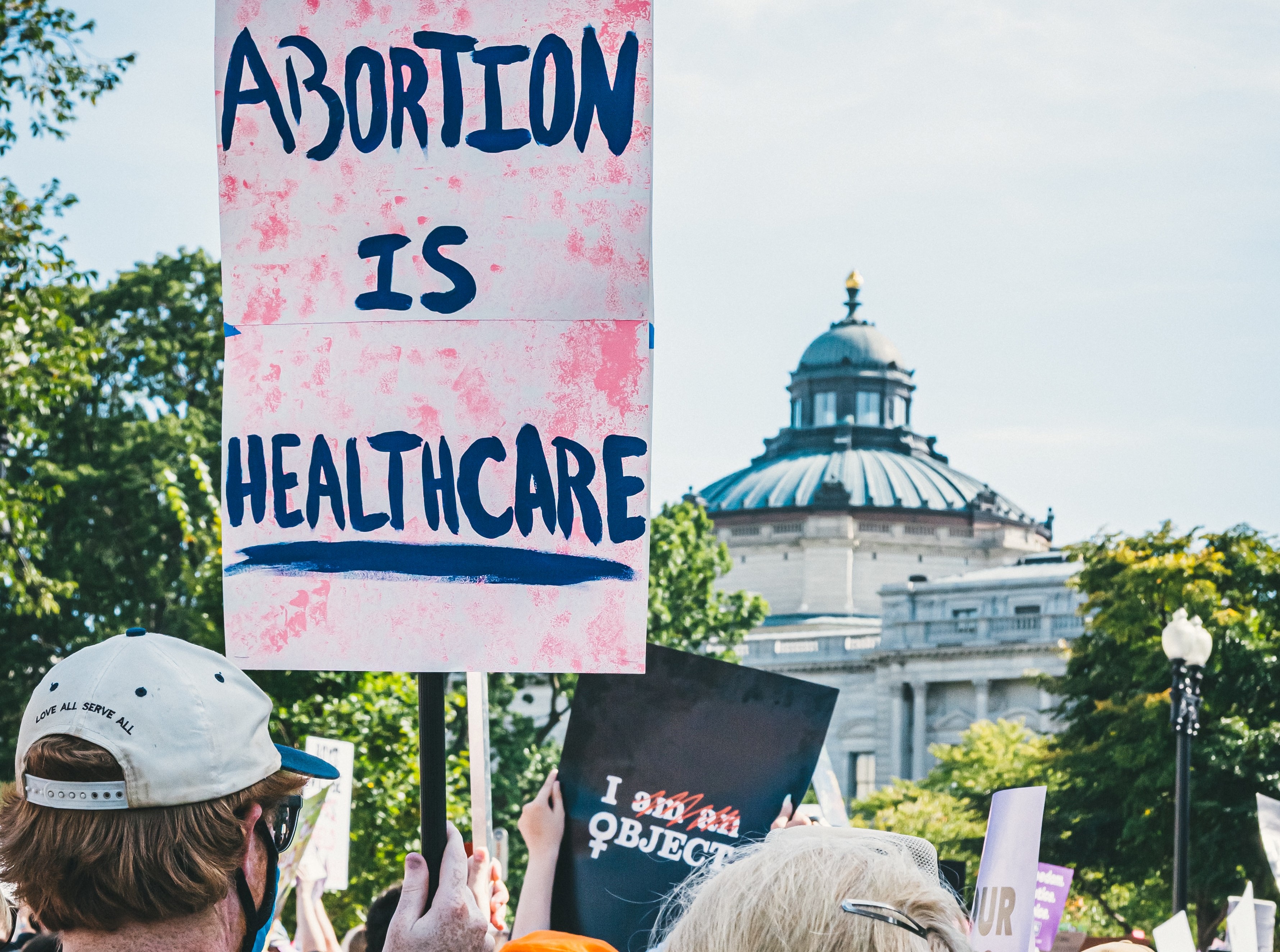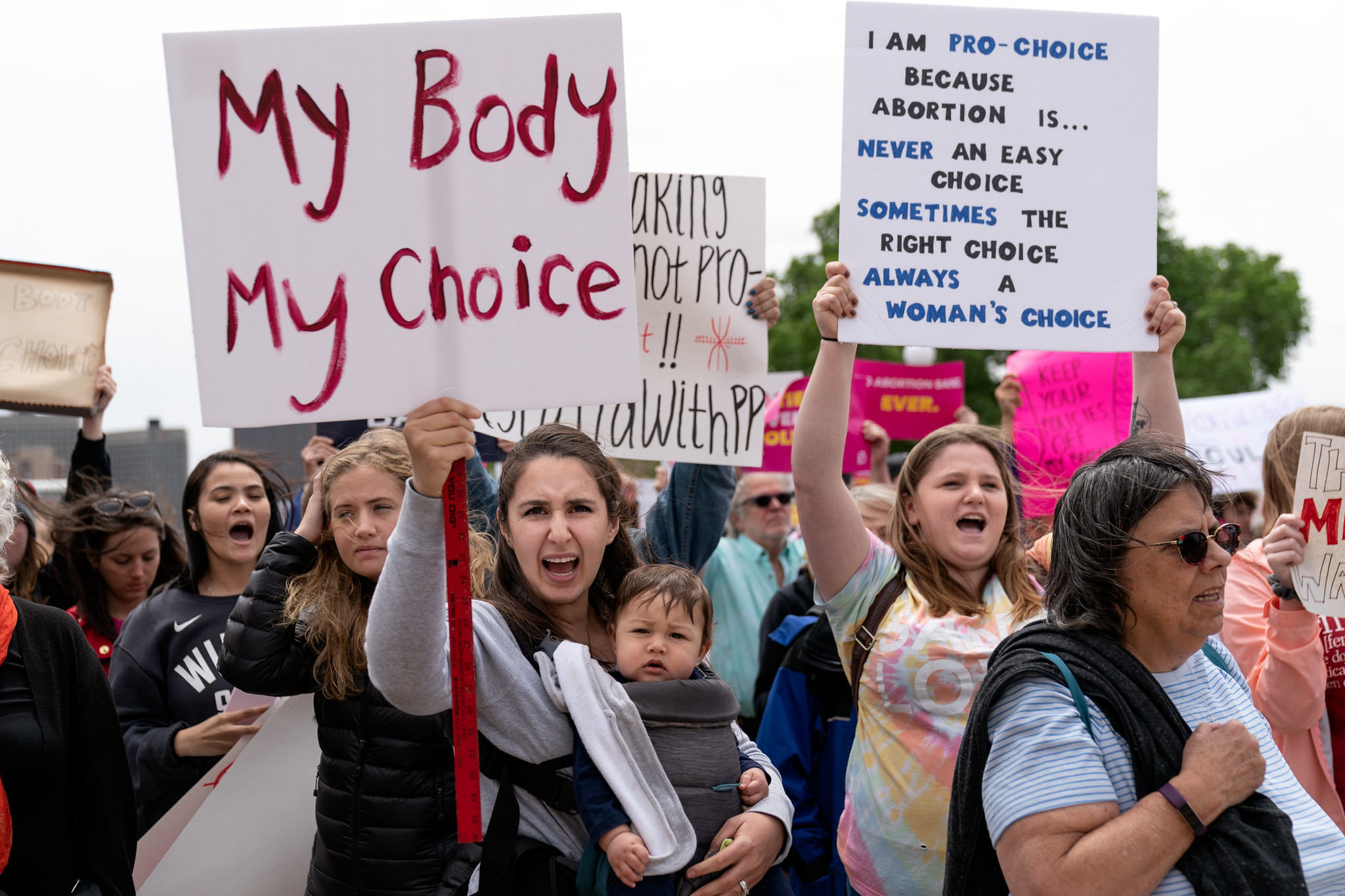
US abortion rights under threat: what’s next?
On 1 December, the US Supreme Court heard the oral argument in Dobbs v. Jackson Women’s Health Organization, the country’s most important abortion case in decades. Here’s what happened and why it matters.

A very brief history
The right to abortion is not legally enshrined in the US, and individual states can set their own restrictions, but until now they’ve been prohibited by a crucial 1973 Supreme Court ruling, Roe v. Wade (or Roe, for short), from making abortion illegal before the foetus is viable (i.e. can survive outside the womb – this was around 28 weeks of pregnancy at the time of the ruling, and is now around 23 due to medical advancements).
This week’s case is a direct threat to Roe.
The American public has always been very divided about abortion. Overall, the majority believe abortion should be legal in most or all cases, though the opposite is true in Mississippi and six other states.
Anti-abortion lawmakers and policymakers have spent years trying to shape a conservative Supreme Court, and triumphed during the administration of Donald Trump, who appointed three conservative justices. Many Americans voted for Trump primarily because of the promise that he would appoint conservative justices – with overturning Roe a key consideration for many of those voters. With a 6:3 conservative majority, the Supreme Court is poised to make that happen.
Dobbs v. Jackson Women’s Health Organization
In 2018, the conservative state legislature of Mississippi enacted a law that bans abortions after 15 weeks of pregnancy – months before foetal viability. (Since then, it has also instituted a 6-week ban, though it’s the 15-week prohibition that went before the Supreme Court.) At this point, there was only one remaining abortion clinic, Jackson Women’s Health Organization, in the entire state of nearly three million people. This clinic was already severely restricted by state laws – for example, doctors in Mississippi are mandated to tell patients that abortion raises the risk of breast cancer, even though the American Cancer Society and American College of OB-GYNs have vociferously debunked that claim.
Following the 2018 law, Jackson Women’s Health Organization sued the state for violating the viability standard set in Roe. The issue at the heart of the case, which made it up to the Supreme Court, is whether it is unconstitutional for states to prohibit elective abortions before foetal viability. This means that a ruling in favour of Mississippi may also mean overturning Roe.
Oral argument: the court versus reality
One theme that ran throughout the two-hour oral argument was how little those who attack the right to abortion understand the reality for people with unintended pregnancies.
Solicitor General Scott Stewart, who represented Mississippi, argued that advancements and greater availability of contraception mean women don’t rely on abortion. In a written submission considered by the court, Jonathan Mitchell (the architect of the draconian Texas abortion law), wrote that “Women can ‘control their reproductive lives’ without access to abortion; they can do so by refraining from sexual intercourse”.
The realities
Arguments of these kinds place all responsibility for pregnancy on the shoulders of women, and ignore important factors:
- Not all sex is consensual.
- About half of American women who have an unplanned pregnancy were using contraceptives during the month of conception.
- Given the flawed and unequal US healthcare system, contraception is too expensive for many women – even going to the doctor for a prescription is more than what many Americans can afford.
- It’s not within the remit of lawmakers to intervene in or prevent women exercising their right to control their sex lives.
Some of the justices, like Chief Justice Roberts, didn’t attack abortion entirely but picked at the viability line and insinuated that 15 weeks is more than enough time to discover and end a pregnancy. As Solicitor General Prelogar pointed out, there are many reasons why this may not be the case – especially for vulnerable girls and women. Some face changing circumstances in the middle of a pregnancy, like a partner leaving, job loss, or illness. Others – especially young women – don’t even know they’re pregnant. Still others need months just to scrape up the money to afford an abortion ($600-$800 in Mississippi), travel costs, and time off of work.
Moreover, reversing Roe would not ensure the 15-week limit applies everywhere, and at least 20 US states would enforce even more restrictive abortion legislation. For the one-in-four women in America who have an abortion, that would be disastrous. Some would be forced to have children they don’t want, and many others would attempt to end their pregnancies illegally or by travelling to other states, which often means putting their lives at risk, having to lose a job, or waiting until it’s too late. Arguing on behalf of Jackson Women’s Health Organization, Attorney Julie Rikelman told the court, “Eliminating or reducing the right to abortion will propel women backwards.”

Justice Coney Barrett, the Court’s newest justice and an outspoken opponent of abortion, repeatedly emphasised that unintended pregnancies needn’t prevent women from equal opportunities because of safe haven laws, which mean women can give up their infants to the state soon after birth. In response, Rikelman responded that it’s not just parenthood that matters. Pregnancy and childbirth can be a huge risk and burden. In fact, as she pointed out, it is 75 times more dangerous to give birth in Mississippi than it is to have a pre-viability abortion. That statistic is even higher for people of colour.
Supreme Court Justice Sotomayor pointed out the religious motivations behind attacks on abortion rights, and how they prioritise the unborn over living women: “When does the life of a woman enter the calculus?… The state is saying to women, we can choose not only to physically complicate your existence, put you at medical risk, make you poorer by choice, because we believe…what?”
What’s next
The justices will deliberate over the coming days, but most likely won’t reach a decision for several months – likely not until June.
Congress is also currently debating legislation that would codify the right to abortion, as other countries have done, though a slim Democratic majority means it is unlikely to pass.
Given its conservative majority, it is likely that the Supreme Court will uphold the Mississippi abortion restriction. This doesn’t necessarily mean overturning Roe v. Wade and the viability standard, however, as conservative justices indicated concern about the political implications of doing so.
Prelogar cautioned that if the Court does overturn Roe, the “real world effects would be severe and swift”. Nearly half of the states would quickly make abortion illegal – many without exception for rape or incest. And even if Roe isn’t completely overruled, states would still be emboldened to enact additional restrictions on abortion.
Our position
Population Matters is emphatically pro-choice, and we believe it is critical to keep watching the situation in the US – and in other countries where reproductive rights are under attack – and to support the excellent organisations fighting to protect those rights (e.g. Planned Parenthood and the Center for Reproductive Rights).
Among the many motivations fuelling opposition to abortion rights in some countries is the drive to increase the birth rate. In the US, some anti-abortion organisations and politicians have expressed concern about population decline, and attacked the case for sustainable population. For more on reproductive rights violations – and the motivations fuelling them – see our latest report, Welcome to Gilead.


